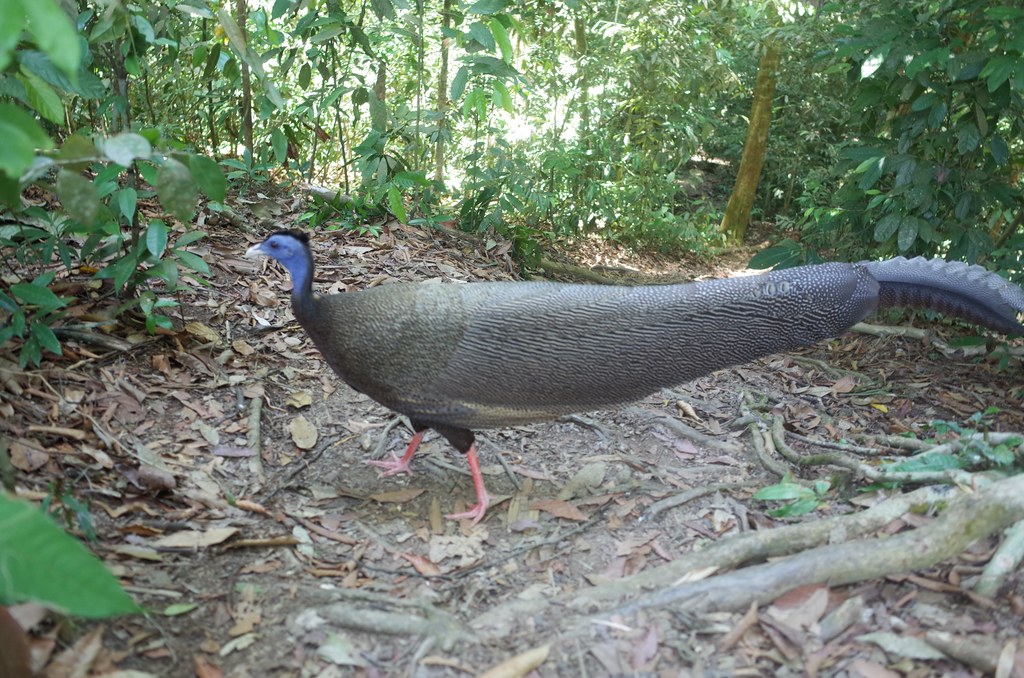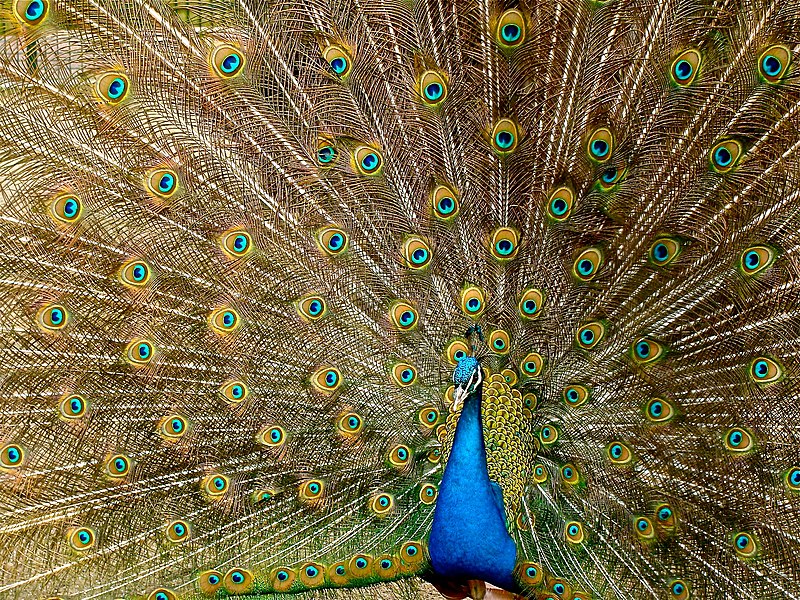
Male great argus at Bukit Lawang
The great argus (in Indonesian kuau raja - the name 'kuau' being a transcription of the sound the bird makes (listen here), and 'raja' meaning king), Argusianus argus, is a species of pheasant commonly seen in the jungle near Bukit Lawang. It is distributed in forests across Sumatra, Malaysia, southern Thailand/Burma and Borneo (in Borneo the great argus is the subspecies Argusianus argus grayi, easily distinguishable because the upper body of the bird is reddish-brown) at altitudes from 0-1200m. Its name is taken from Argus Panoptes, a 100-eyed mythological Greek giant, because the male great argus has numerous 'eyes' (ocelli) on its tail feathers.
The great argus has a diet mostly of fruit, but also insects, both scavenged from the forest floor.
The male great argus is well-known for its dance, which it performs during the breeding season to attract mates. It spreads its tail and dances around a patch of forest floor before mating with the female. Mature male great arguses live in a smaller range, based around their personal dancing ground, which is kept clear of leaves, than juvenile birds.
Great Argus mating dance, near Bukit Lawang
The great argus is a solitary bird, only meeting other members of its species to breed. The female lays two or three eggs in a nest built in a tree. Both male and female great argus spend much of their times resting in the trees - their large size and dependence on scavenged food from the forest floors mean that is energy conservations is important. Population density is low, to avoid competition between individuals.
Peacock?
 Indian peacock
Indian peacockThe great argus is not a peacock (male peafowl) - there are only three peafowl species - the Indian peafowl (blue, and common in bird collections in the West) Pavo cristatus, green peafowl (found in Java and other parts of East Asia, but not in Sumatra) Pavo muticus, and the Congo peafowl Afropovo congensis. Peafowls and the great argus are all members of the pheasant family, but great arguses are not peafowls.
The great argus is the only living species in the genus Argusianus. Its closest relative is the crested argus, Rheinardia ocellata, which lives in Malaysia and Vietnam. Both birds are rainforest inhabitants, although the crested argus has more effective wings. While the male great argus has 'eyes' on its tail feathers, similar to peacocks, the crested argus lacks such 'eyes'.
Peafowl, like the argus species, are members of the pheasant family. The peafowl and argus clades are sisters, sharing a common ancestor according to DNA analysis.
Another allied group of birds is the peacock-pheasants. Most (but not all) species also have ocelli (eyes), although the sole species found in Sumatra, the bronze-tailed peacock-pheasant, Polyplectron chalcurum lacks ocelli. The presence of ocelli in relatively distantly related species and the presence/absence of ocelli in two closely related species suggests that the genetic mutation responsible for the 'eyes' may have occurred independently in the different genera and is thus relatively easily lost/acquired.